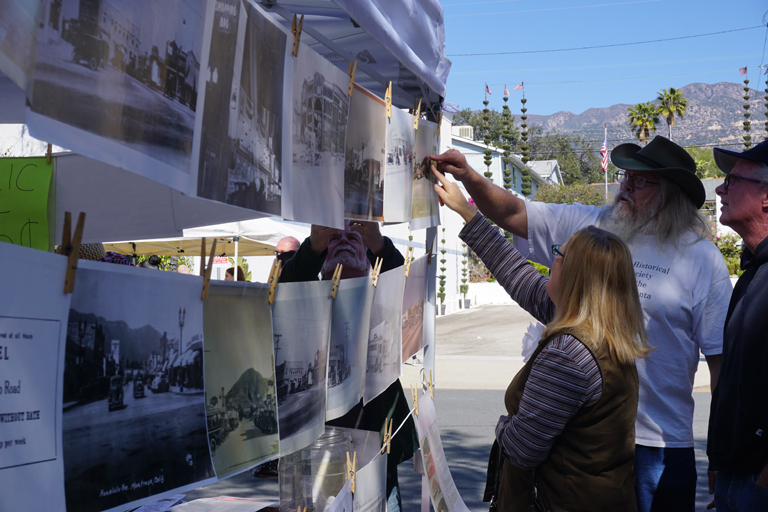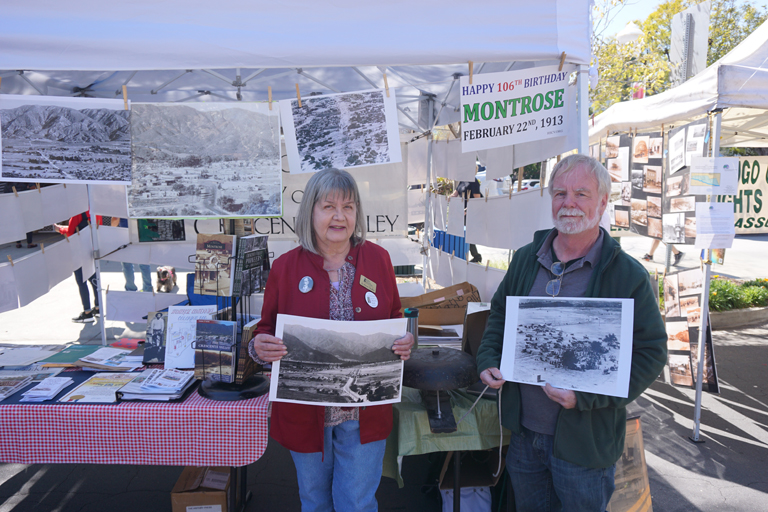
Mike Lawler answers questions about the historic photos.
By Charly SHELTON
On Feb 22, 1913, a small development was founded in the foothills above Los Angeles by property developers Holmes and Walton. What once was ranch land became a small community with hearty citizens who scratched a town out of the rock-laden soil on a hillside. To commemorate the occasion, the citizens gathered together at what would become the intersection of Verdugo Road and Honolulu Avenue in Montrose to hold a barbecue, attracting more than 4,000 potential buyers. Now, 106 years later, residents still celebrate the date of Montrose’s founding. And this year, the Historical Society of the Crescenta Valley honored the date with a special exhibition of historic photographs at the weekly Sunday Harvest Market.
“To commemorate [Founder’s Day] we’re showing people what was in Montrose and talking about what is here now,” said Mike Lawler, former president of the Historical Society. “What’s interesting about Montrose when you look at an old photo of it, a lot of those buildings are still there. They’re covered under stucco or a façade, but the buildings are still there and I would love if some of the builders would bring back those old façade. This one is a great example – Starbucks. [The former Crescenta-Canada National Bank’s] beautiful façade is still under Starbucks; I would love if they would bring that back. All these buildings are still here — they just don’t look quite the same.”
Over the years, the town has seen a huge amount of change, in more ways than one. From the size of the town geographically to the number of buildings to the population and demographic makeup of the residents, the town has grown into its own and become home to generations of residents. But for Lawler, Montrose has grown in another way that has become a hallmark of the Crescenta Valley area – big, beautiful trees.

“I mean this place was empty of trees in the old days and now it’s gorgeous, its lush and beautiful and in many ways I think the Crescenta Valley is nicer than it used to be,” Lawler said.
More history of the Crescenta Valley can be found in Lawler’s weekly column in the Viewpoints section of this paper or within any of his numerous books on the subject available through the Historical Society’s website at CVHistory.org and at Once Upon A Time Bookstore at 2207 Honolulu Ave in Montrose.
